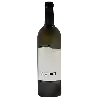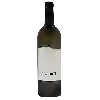
Domaine de MonsFloc de Gascogne Blanc
This wine generally goes well with
Details and technical informations about Domaine de Mons's Floc de Gascogne Blanc.
Discover the grape variety: Schuyler
A complex interspecific cross between zinfandel and ontario (winchelle x diamond) obtained in 1932 by Wellington Richard. and Oberle G.D. at Cornell University in Geneva (United States). It can also be found in Canada, almost unknown in France. We noted that the boskoop glory resembles somewhat the Schuyler even if the origins, each time put forward, are quite different, to be followed!
Informations about the Domaine de Mons
The Domaine de Mons is one of wineries to follow in Gascogne.. It offers 2 wines for sale in the of Gascogne to come and discover on site or to buy online.
The wine region of Gascogne
Between the Landes forest, the Garonne and the Pyrenees, the Gascony hillsides cover the Gers dePartment and part of the Landes and Lot-et-Garonne departments. The vineyards occupy the same area as Armagnac, a brandy still produced in the region, but whose volumes have declined in favour of vins de pays (now PGI). Under the influence of a mild oceanic Climate, it is fairly wet in the west, drier in the east, especially in summer. In the west, the subsoil of tawny sands is of marine origin, covered with boulbènes; in the east, it gradually gives way to molasse, a rock resulting from the erosion of the Pyrenees.
The wine region of South West
The South-West is a large territorial area of France, comprising the administrative regions of Aquitaine, Limousin and Midi-Pyrénées. However, as far as the French wine area is concerned, the South-West region is a little less clear-cut, as it excludes Bordeaux - a wine region so productive that it is de facto an area in its own right. The wines of the South West have a Long and eventful history. The local rivers play a key role, as they were the main trade routes to bring wines from traditional regions such as Cahors, Bergerac, Buzet and Gaillac to their markets.
The word of the wine: Flavours (families of)
Aromas are classified into categories called families of aromas: fruity, floral, fermentative, vegetal, woody, balsamic, spicy, mineral, empyreumatic, animal.










